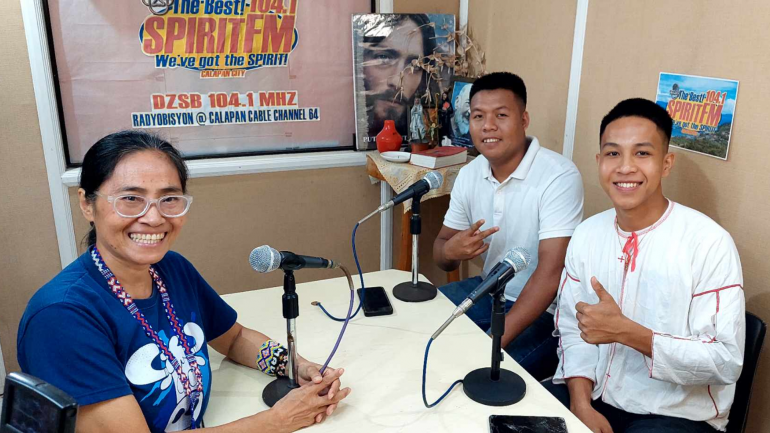The Mangyan spirit of Christmas: Traditions, challenges, and dreams of a resilient community

As a child, Mangyan Batoy Daw Ay would embark on a long, barefoot journey from his mountain home, crossing treacherous rivers with his family to join lowland communities in celebrating Christmas.
It was an event he eagerly anticipated every year. However, as he grew older and attended school, Daw Ay learned the value of dignity and self-reliance.
“It is not dignified to ask, which looks like begging for gifts,” he shared during a radio conversation on DZSB 104.1 Spirit FM on December 21.
Christmas Tradition
It has been a tradition for the Mangyan, particularly those belonging to the Bangon tribe, to look for bounty during the Christmas season, although they are less now, “thanks to local government units and individuals who have responded to the longtime campaign to spare the Mangyan from going down because they get discriminated, their health exposed to harm, they leave their farm livelihood, and some misuse the funds they collect,” said Daw Ay.
Used to the communitarian spirit, they would bring entire families, including infants and toddlers cradled on slings made of cloth or Mangyan-woven threads, to the town centers, as well as their crafts, usually native wallets and pencil cases and mountain orchids, with the hope of earning more instead of the very low prices paid them by traders.
Some would exchange their products for clothes and food like they used to do during the early barter system between their ancestors and Chinese traders. In Calapan city, they stay in areas they believe are safe.
Changing Times
Influenced by the lowlanders, some have learned to gamble, to drink liquor, and spend on unnecessary things, which earlier got the attention of church leaders like then Bishop Warlito Cajandig, who convened multi-sectoral meetings for about a decade in order to address the issue.
Daw Ay is taking up Bachelor of Science in Marine Transportation at Southwestern College of Maritime, Business and Technology in Calapan City and president of the Mangyan group of students under the care of the Mangyan Mission, Inc., a church-based non-government organization.
Herald Calinog, agrees with his friend Daw Ay in defining Christmas in their communities to mean “giving, being happy and at peace with one another”. In some luckier areas, they get to participate in the dawn mass, when priests are able to reach them.
Calinog is Mangyan Hanunuo, taking up Bachelor of Science in Criminology course at the SVD-run Divine Word College of Calapan. He is former president of the Mangyan student organization there.
The Mangyan People
The Mangyan are original peace-loving settlers in Mindoro island, but pushed to the mountains by those who came with titles, a practice not familiar with the Mangyan who used to be alien to formal schooling, until recent years when more professionals are being produced -priest, nun, teachers, midwives, nurses, business people, police, among others, said Calinog.
There are eight tribes of them, each with its own set of culture – language, clothing, etc. in Mindoro island. They are the Hanunuo, Tadyawan, Iraya, Alangan, Bangon, Buhid, Tawbuid, Ratagnon.
A Stress-Free Celebration
While Christmas was introduced to the Mangyan through Christianity, their celebrations differ from those of lowlanders.
“There is less focus on material things,” Daw Ay and Calinog explained. Instead, the Mangyan embody the spirit of sharing year-round.
Unlike lowlanders, who often stress over expenses and activities during the holidays, the Mangyan find contentment in life’s simple pleasures: fresh vegetables and root crops, clean air, the soothing sounds of birds and waterfalls, and the vast mountain landscape.
Dreams for the Future
For Daw Ay and Calinog, Christmas is not just a time for reflection but also a moment to look ahead. Calinog dreams of becoming a policeman to protect his community, while Daw Ay aspires to be a seaman and to fund the construction of a bridge across the perilous rivers his community must traverse.
Their aspirations go beyond personal success—they aim to raise awareness about their community’s equal rights, advocate for responsible leadership during elections, and safeguard their ancestral lands through education.
Through their efforts, Daw Ay, Calinog, and other young Mangyans are weaving hope and resilience into the fabric of their traditions, ensuring that their community’s legacy endures for generations to come.










- Reply
Permalink